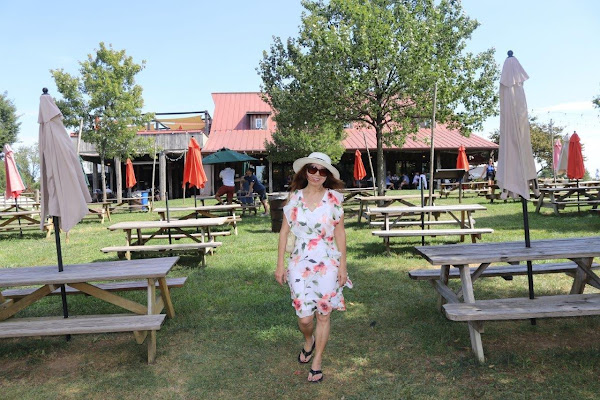Tuesday, September 19, 2023
11 The Winery at Bull Run and Pearmund Cellars
Monday, September 18, 2023
10 Basilica of the National Shrine of the Immaculate Conception
Situated within the campus of The Catholic University of America in Washington, D.C., the Basilica of the National Shrine of the Immaculate Conception is a remarkable religious and architectural masterpiece. This grand Roman Catholic church ranks among the largest and most prominent in the United States. Visiting this splendid site is a sensory delight for the eyes, body, and mind, offering a captivating blend of aesthetics and spirituality.
Wednesday, September 6, 2023
9 The Washington D.C. Temple/Mormon Temple
The Washington D.C. Temple of The Church of Jesus Christ of Latter-day Saints is sometimes informally referred to as the "Mormon Temple" by people outside the faith.
The Washington D.C. Temple, officially known as the Washington D.C. Temple of The Church of Jesus Christ of Latter-day Saints (LDS Church), is a prominent religious structure located in Kensington, Maryland, just north of Washington, D.C. It is one of the most iconic and recognizable buildings associated with the LDS Church and serves as a place of worship and religious significance for members of the faith in the Washington metropolitan area and beyond. Here are some key details about the Washington D.C. Temple. It is not open to the general public.
The Christmas lights display at the Washington D.C. Temple of The Church of Jesus Christ of Latter-day Saints is a popular annual tradition that draws visitors from the Washington, D.C. metropolitan area and beyond.
The temple was announced by LDS Church President Spencer W. Kimball in 1968, and its construction began in 1971. It was dedicated on November 19, 1974. The temple is known for its unique and striking modern design, featuring six towering spires and beautiful gardens.
Temples in the LDS Church are considered sacred and are used for ordinances and ceremonies that are central to the faith. These include baptisms for the dead, marriage ceremonies (sealings), and other sacred rituals. Only members of the LDS Church in good standing are allowed to enter the temple.
The Washington D.C. Temple's architecture is distinctive. The six spires represent various elements of the faith, including the First Presidency and the Quorum of the Twelve Apostles. The temple is constructed of white marble and is surrounded by well-maintained grounds and gardens.
In addition to the temple itself, there is a Visitors' Center on the temple grounds that is open to the public. The Visitors' Center provides information about the LDS Church, its beliefs, and the purpose of temples. Visitors can learn about the significance of the temple to Latter-day Saints and explore exhibits and displays.
For more information, visit
Washington DC Temple — A Sacred Monument in a City of Monuments - YouTube
Saturday, September 2, 2023
8 Theodore Roosevelt Island
Theodore Roosevelt Island is a national memorial located in the Potomac River in Washington DC. It honors the 26th president of the United States, Theodore Roosevelt, who was a conservationist and a lover of nature. The island was designated as a memorial to him by Congress in 1932.
The island was once a neglected, overgrown farmland that was transformed into a natural forest by landscape architects in the 1930s. They planted native trees and shrubs to create a habitat for wildlife and a refuge for visitors.
To access the island, visitors have to park their cars on the Virginia side of the river and walk across a footbridge that offers scenic views of Georgetown, northern Virginia, and the Potomac River.
The island has a statue of President Roosevelt at the entrance, surrounded by four large granite tablets inscribed with his quotes on nature, manhood, youth, and the state. The rest of the island is mostly left in its wild state, with trails that loop around the island and offer glimpses of the river and the city.
The trail around the island is about 1.5 miles long and takes about 30 minutes to complete. It is an easy walk that is suitable for all ages and abilities. Along the way, visitors can enjoy the peaceful atmosphere and the diverse flora and fauna of the island.

























































